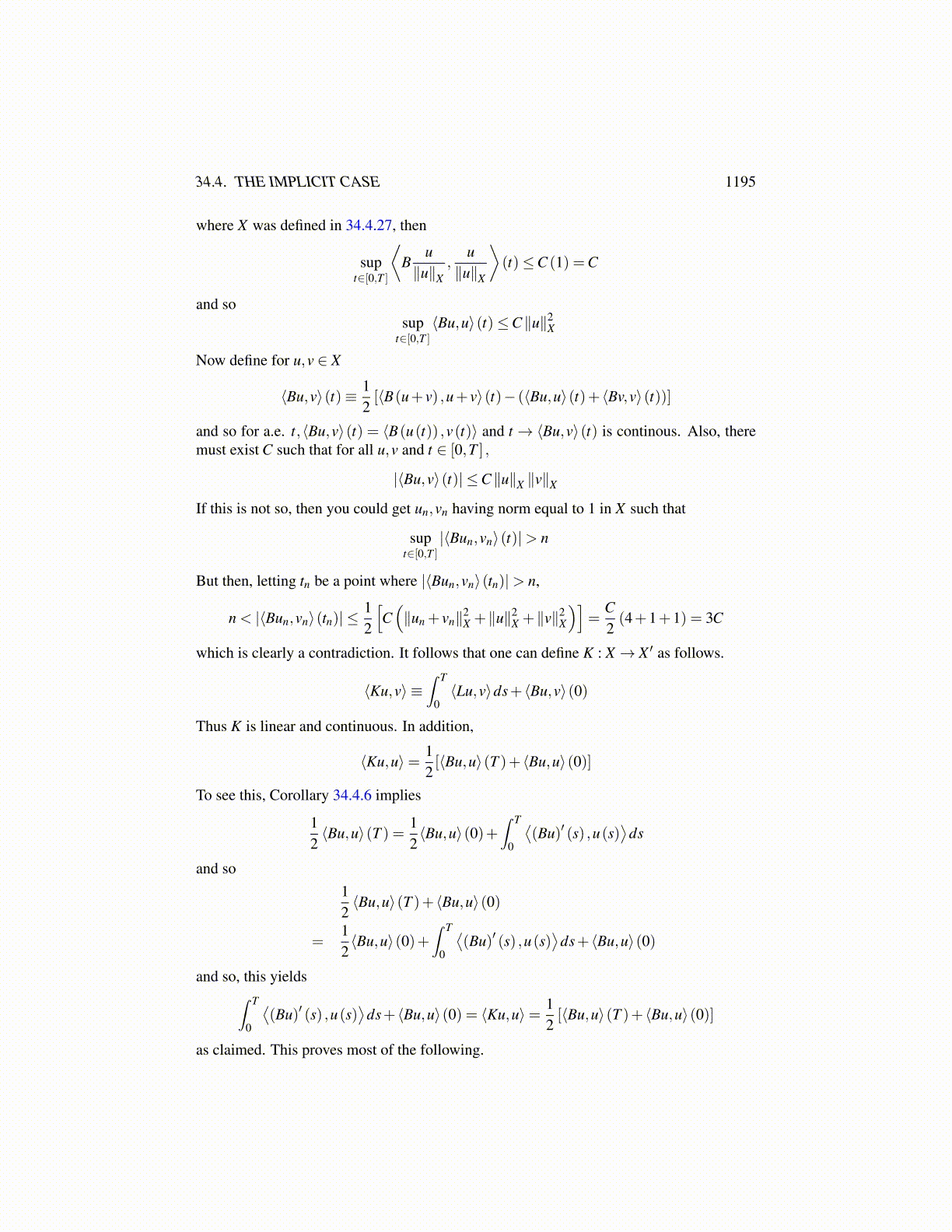
34.4. THE IMPLICIT CASE 1195
where X was defined in 34.4.27, then
supt∈[0,T ]
⟨B
u∥u∥X
,u∥u∥X
⟩(t)≤C (1) =C
and sosup
t∈[0,T ]⟨Bu,u⟩(t)≤C∥u∥2
X
Now define for u,v ∈ X
⟨Bu,v⟩(t)≡ 12[⟨B(u+ v) ,u+ v⟩(t)− (⟨Bu,u⟩(t)+ ⟨Bv,v⟩(t))]
and so for a.e. t,⟨Bu,v⟩(t) = ⟨B(u(t)) ,v(t)⟩ and t → ⟨Bu,v⟩(t) is continous. Also, theremust exist C such that for all u,v and t ∈ [0,T ] ,
|⟨Bu,v⟩(t)| ≤C∥u∥X ∥v∥X
If this is not so, then you could get un,vn having norm equal to 1 in X such that
supt∈[0,T ]
|⟨Bun,vn⟩(t)|> n
But then, letting tn be a point where |⟨Bun,vn⟩(tn)|> n,
n < |⟨Bun,vn⟩(tn)| ≤12
[C(∥un + vn∥2
X +∥u∥2X +∥v∥2
X
)]=
C2(4+1+1) = 3C
which is clearly a contradiction. It follows that one can define K : X → X ′ as follows.
⟨Ku,v⟩ ≡∫ T
0⟨Lu,v⟩ds+ ⟨Bu,v⟩(0)
Thus K is linear and continuous. In addition,
⟨Ku,u⟩= 12[⟨Bu,u⟩(T )+ ⟨Bu,u⟩(0)]
To see this, Corollary 34.4.6 implies
12⟨Bu,u⟩(T ) = 1
2⟨Bu,u⟩(0)+
∫ T
0
⟨(Bu)′ (s) ,u(s)
⟩ds
and so12⟨Bu,u⟩(T )+ ⟨Bu,u⟩(0)
=12⟨Bu,u⟩(0)+
∫ T
0
⟨(Bu)′ (s) ,u(s)
⟩ds+ ⟨Bu,u⟩(0)
and so, this yields∫ T
0
⟨(Bu)′ (s) ,u(s)
⟩ds+ ⟨Bu,u⟩(0) = ⟨Ku,u⟩= 1
2[⟨Bu,u⟩(T )+ ⟨Bu,u⟩(0)]
as claimed. This proves most of the following.